 WhatsApp
WhatsApp

DOING HOLDINGS
Environmental Protection Equipment Manufacturer

Environmental Protection Equipment Manufacturer
Charcoal production is the process of converting biomass raw materials into high-quality charcoal products through processes such as crushing, drying, and carbonization. This process requires the support of professional mechanical equipment to ensure efficient, stable, and environmentally friendly production. From raw material pretreatment to final forming, each device plays a key role. This article will introduce the core machines and their functions in charcoal production, and help you understand how to choose the right equipment to optimize the production process.
 Charcoal production process equipment
Charcoal production process equipment
The first step in charcoal production is to determine whether the raw materials need to be crushed. For example, large pieces of wood such as logs, thick branches with a diameter greater than 5 cm, hard fruit shells such as whole coconut shells and walnut shells, whole bundles of straw or reeds and other relatively large raw materials. If crushing is required, the raw materials should be crushed into particles below 30mm, into small pieces or particles, so that the subsequent processing will be smoother and more uniform, ensuring the carbonization effect.
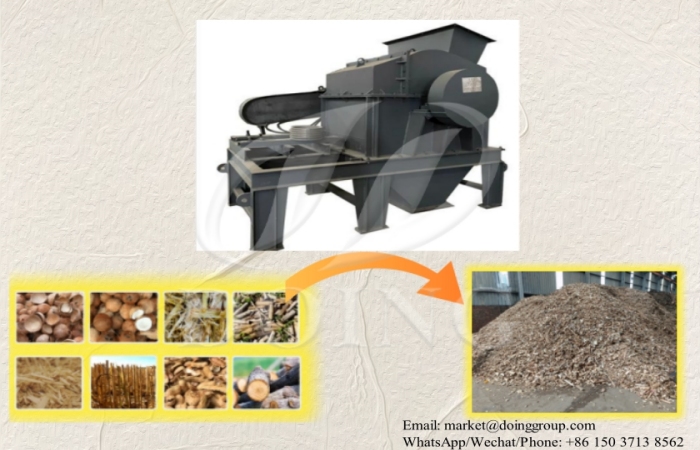 Doing charcoal raw material crusher
Doing charcoal raw material crusher
If the raw materials have a lot of moisture, they need to be dried in the dryer first.For example, freshly felled wood (moisture content 30-60%), wood materials collected during the rainy season, bamboo (fresh bamboo moisture content 40-50%), fruit shells with high moisture content (such as fresh coconut shells), agricultural waste such as straw and rice husks (high moisture content during the harvest season), washed materials, and materials that have been damp during storage all need to be dried first.Drying process: wet wood chips are fed into the drum dryer through the feeder and enter the lifting area under the action of the guide plate. When the drum rotates, the lifting plate repeatedly lifts and drops the material to form a "material curtain" for heat exchange with the high-temperature flue gas. The material is first preheated to evaporate part of the moisture, and then most of the moisture is removed in the medium temperature section, and finally discharged after reaching the drying requirements. The tail gas is discharged after cyclone dust removal, completing the entire drying process.DOING drying furnace can customize the length and drying time according to the material processing requirements, better adjust the moisture content of the material, improve the carbonization efficiency and save fuel input.
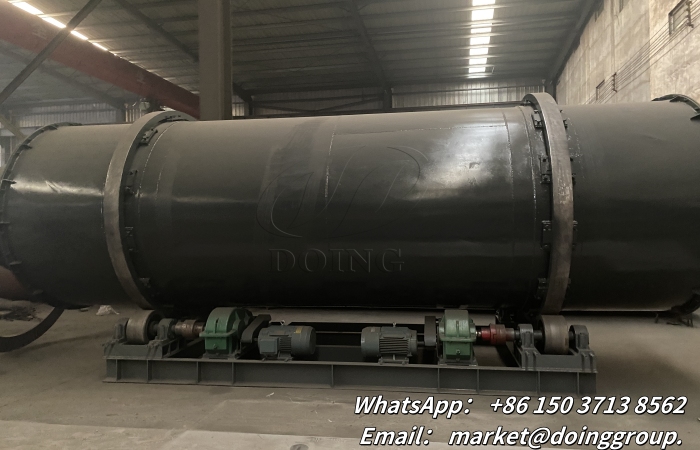 DOING charcoal machine drying furnace
DOING charcoal machine drying furnace
The dried raw materials will then enter the most important link - carbonization.The charcoal production process uses an external heat source (burner) to heat the carbonization host, and the raw materials are dried, dehydrated and carbonized in the furnace in turn. When the temperature reaches a certain value, the raw materials produce combustible gas, which is sent to the combustion chamber for secondary combustion after purification to continuously supply heat to the system. The waste heat is used to dry new raw materials, and the exhaust gas is discharged after dust removal and purification. The system can realize energy self-circulation: the external heat source can be turned off when the pyrolysis gas is sufficient, and it needs to be supplemented when it is insufficient. The carbonization machine is equipped with a variable frequency speed regulating motor, which can accurately control the cylinder speed and adjust the carbonization temperature and time.
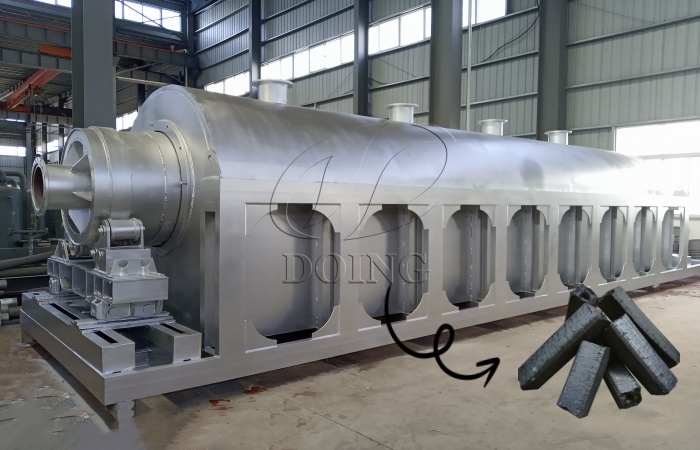 DOING carbonization machine
DOING carbonization machine
The charcoal just out of the carbonization furnace is very hot and needs to be cooled and transported to fully cool it before being sent to the material yard or silo for packaging or storage. The cooling water of the cooling system is cooled by the cooling tower and then recycled through the water pump.
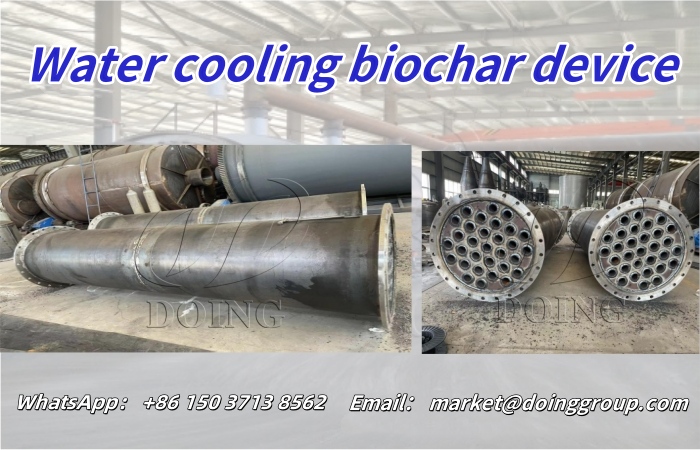 Charcoal machine water cooling biochar device
Charcoal machine water cooling biochar device
Finally, charcoal briquette extruder machines can process the carbonized charcoal powder into various shapes of shaped charcoal. During production, the carbonized charcoal powder is fed into the molding cavity through a spiral feeding device. Under high pressure (10-50MPa) and high temperature (80-120℃), the mold extrude the material into shape: using a double-roller mold can produce charcoal balls with a diameter of 20-50mm; using a flat mold can produce square or cylindrical charcoal blocks; replacing the annular die head can continuously extrude strips or rods of charcoal. The formed charcoal blocks need to be naturally dried or low-temperature dried (60-80℃) to finalize, and finally obtain commercial charcoal products with a density of 0.9-1.3g/cm³ and high mechanical strength.
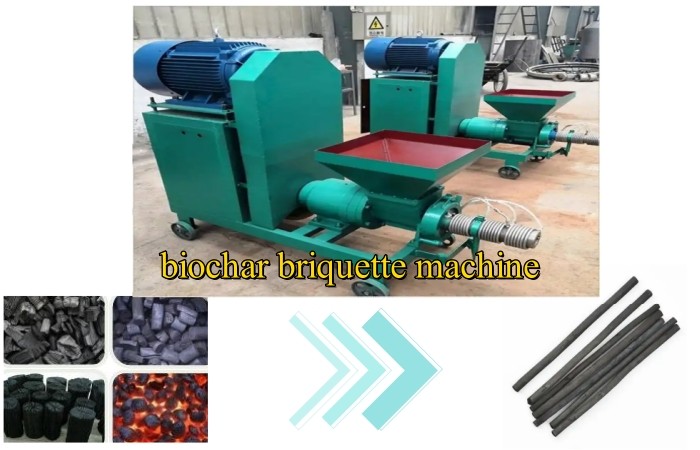 Biochar briquette machine
Biochar briquette machine
In the charcoal production process, the selection of professional equipment directly affects product quality and production efficiency. DOING provides complete charcoal production line equipment solutions. Each device has been carefully designed and strictly tested to ensure that all links are closely connected and operate stably. In response to different production needs, DOING can provide customized equipment configuration solutions to help customers establish efficient and energy-saving production lines. At the same time, we provide professional technical support and after-sales service, and provide full guidance from equipment selection to installation and commissioning to ensure that customers can stably produce high-quality charcoal products to meet market demand.